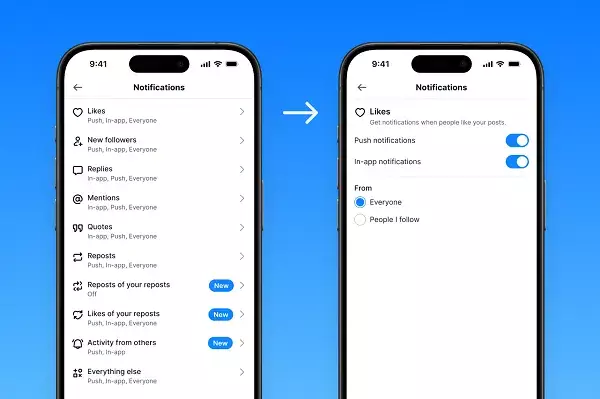In the crowded realm of social media, Bluesky positions itself as a beacon of decentralization and user empowerment. The platform endeavors to carve out a distinct identity by offering features akin to Twitter, which is now rebranded as X. While the underlying philosophy of giving users more control over their feed and engagement is compelling, the practical application reveals a stark reality: it struggles to attract and retain the mass audience it desperately needs to thrive. The recent updates aim to mimic Twitter’s notification controls, allowing users to customize which accounts they follow receive updates from and how they are notified about interactions. These seemingly minor tweaks are designed to make the platform more user-friendly, but they also underscore a deeper challenge—can Bluesky truly differentiate itself without sacrificing the simplicity that users crave?
Functionality vs. User Engagement: The Core Dilemma
Bluesky’s latest efforts primarily revolve around enhancing usability, with features that mirror familiar social media mechanics—notifications, activity management, and customizable alerts. While these updates signal a step toward parity with Twitter/X, they hardly address the core issue: engagement. A platform’s success hinges on active participation, viral content, and community-building, none of which can flourish if users aren’t sufficiently drawn in. Despite offering decentralization—a concept many find appealing in theory—the actual user behavior reveals a preference for convenience. Users are reluctant to invest additional effort in managing their feeds or settings when easier, more automated solutions are at hand elsewhere. This dilemma highlights not only the challenge of competing with giants like X and Meta’s Threads but also the fundamental human desire for effortless social interaction.
The Illusion of Control and the Power of Convenience
Bluesky appeals to the idealistic notion of ownership and privacy. The idea that users can control what they see, whom they follow, and how their data is managed resonates with many who feel disillusioned by the algorithms of traditional platforms. However, this allure often fades in practice because manual control conflicts with the innate human craving for convenience. People prefer platforms that “just work,” without the need for constant adjustment. That’s why services like Threads have thrived; they require a single tap from a connected account—Instagram—that simplifies onboarding and engagement. Conversely, Mastodon, with its server-based architecture, imposes complexity that deters casual users. This dichotomy reveals a fundamental truth: no matter how attractive decentralization sounds in theory, most users prioritize seamless experience over ideological purity.
Is Differentiation Still Possible in a Saturated Market?
The challenge for Bluesky is not just about matching features but establishing a unique value proposition that resonates with the modern user. Simply copying Twitter’s notification system or democratizing content control isn’t enough. Users have shown a preference for platforms that effortlessly integrate into their existing digital routines. Unless Bluesky can identify and emphasize features that cannot be easily replicated—be it hyper-specific moderation tools, niche community support, or innovative engagement mechanics—it risks remaining a niche experiment rather than a mainstream contender. Its current trajectory suggests an uphill climb, especially when the appeal of convenience continues to dominate social media habits.
Final Thoughts: The Future of Decentralized Social Networks
Decentralization remains a theoretically powerful concept, promising greater autonomy and privacy. Yet, in real-world application, it must reconcile this idealism with user expectations of simplicity and instant gratification. The future of Bluesky hinges on whether it can transcend the technical appeal of decentralization and deliver a compelling, user-centric experience that rivals—if not surpasses—mass-market platforms. Until then, it faces an uphill battle, weighed down by the inertia of established giants and the human tendency to favor the path of least resistance. If Bluesky wishes to break through the noise, it must innovate beyond mimicking existing platforms and craft an experience that marries user empowerment with ease—without compromise. Only then can it hope to transform from an aspirational project into a revolutionary social media alternative.


Leave a Reply